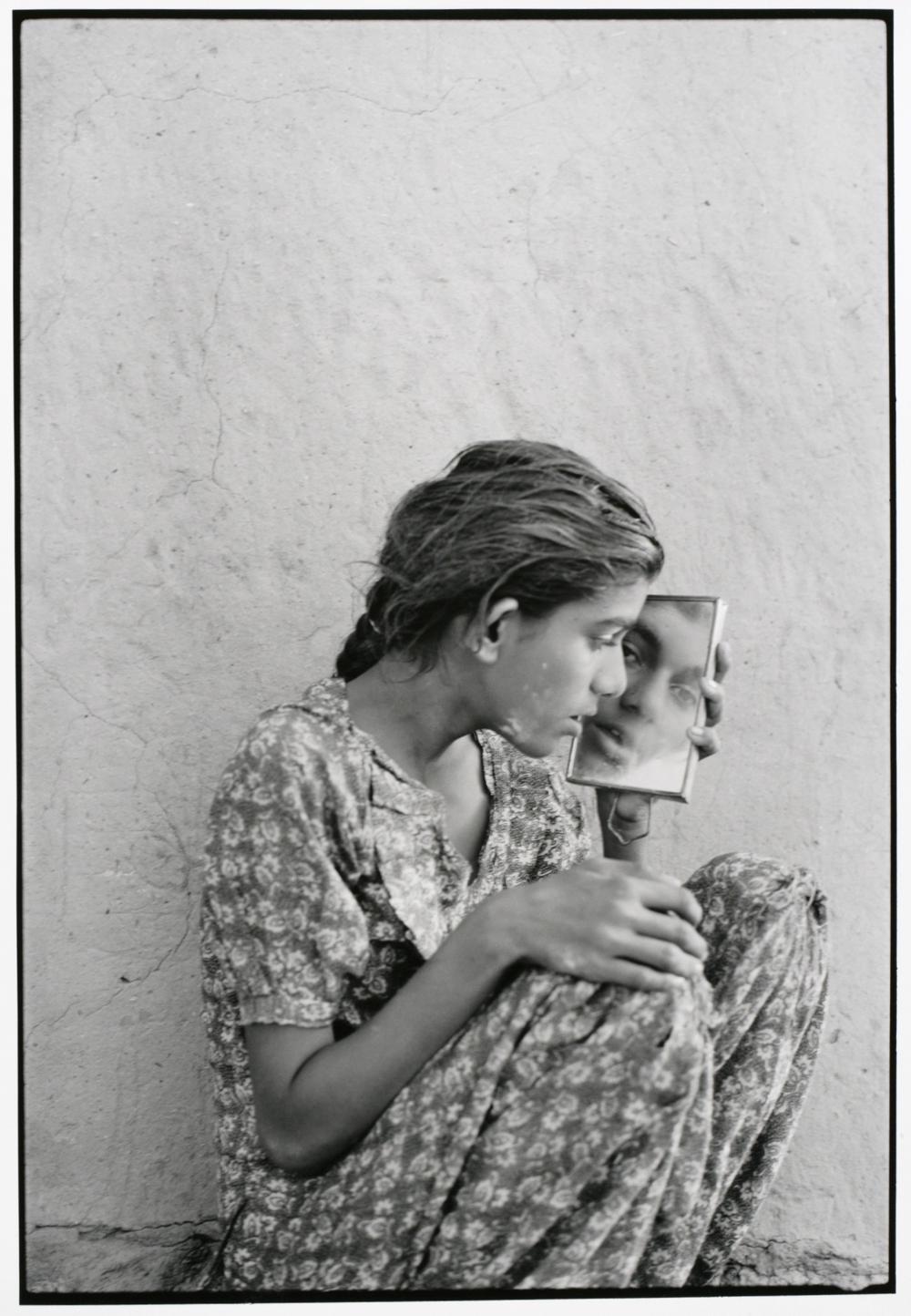Gauri Gill. Notes from the Desert

Dedication and companionship characterize Gauri Gill’s socially minded approach to her photographic subjects. It is a stark contrast to the legacy of photography in India, which has emphasized exotic otherness in service of nineteenth-century colonial interests to today’s travel advertisement campaigns.1 In 1999 Gill visited Rajasthan while on holiday and saw a girl being beaten in a village school; “I was disturbed and wanted to do something,”2 but the English-language news magazine she worked for, Outlook, was not interested in the story. Gill took a sabbatical and began photographing in the rural desert communities of West Rajasthan, recording the lived experiences of people who are largely outside the consciousness of India’s urban middle class. On return visits to the region, the artist developed relationships with the Bishnoi peasants, Jogi nomads, and Muslim migrants who lived there, including a young girl, Jannat, whom she photographed from childhood to adulthood.3 Gill’s archive of tens of thousands of images bears witness to family celebrations and struggles, rural education, epic cycles of drought and flooding, and birth and death.
Jodi Throckmorton, Postdate: Photography and Inherited History in India (San José, CA: San José Museum of Art, 2015), 48. ↩︎
Gauri Gill, in Andrew Russeth, “Part of My Job Is Just to Listen: Photographer Gauri Gill on Her Peripatetic Art,” ARTnews.com, July 24, 2018, available at https://www.artnews.com/art-news/artists/part-job-just-listen-photographer-gauri-gill-peripatetic-art-10697/. ↩︎
Parul Dave Mukherji, “The Photographic Present: The Here and Now of Contemporary Indian Art,” in The Matter Within: New Contemporary Art of India (San Francisco: Yerba Buena Center for the Arts, 2012), 62. ↩︎